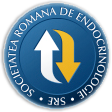
- Login
- Register
- Home/Current Issue
- About the journal
- Editorial board
- Online submission
- Instructions for authors
- Subscriptions
- Foundation Acta Endocrinologica
- Archive
- Contact
 Romanian Academy
Romanian Academy
 The Publishing House of the Romanian Academy
The Publishing House of the Romanian Academy

ACTA ENDOCRINOLOGICA (BUC)
The International Journal of Romanian Society of Endocrinology / Registered in 1938in Web of Science Master Journal List
Acta Endocrinologica(Bucharest) is live in PubMed Central
Journal Impact Factor - click here.

-
Endocrine Care
Dobre R, Niculescu DA, Cirstoiu C, Popescu G, Poiana C
Osteoporotic Hip Fracture Incidence Rates in the Main Urban Area of RomaniaActa Endo (Buc) 2021 17(1): 60-67 doi: 10.4183/aeb.2021.60
AbstractContext. Estimation of osteoporotic hip fracture incidence and Romanian FRAX model were based on nationally reported hospital ICD 10 coding admissions of all hip fractures (without a validation process). Objective. We aimed to calculate, based on individual hospital charts analysis, the incidence of osteoporotic hip fracture in the main urban area of Romania and compare it with data reported to the National Institute of Public Health (NIPH). Design. We retrospectively analyzed the charts of all patients (>40 years old) admitted for hip fracture in a 12-month period in hospitals with an Orthopedic Department in Bucharest and surrounding Ilfov County (11.8% of Romania population). Subjects and Methods. All ICD 10 fracture and event/fall codes were validated against the charts. We calculated the age and sex adjusted incidence of osteoporotic hip fracture and used the national reported hip fracture data base for comparison. Results. There were 2203 hip fractures of which 1997 (90.65%) were fragility fractures. The crude incidence of low-energy hip fractures was 171/100,000 (225/100,000 in women, 103/100,000 in men). The incidence rose with age to a maximum rate of 1902/100,000 in women >85 years. The NIPH-reported incidence of hip fracture was 181/100,000 for the region of interest and 176/100,000 at the national level. Conclusion. The incidence of osteoporotic hip fracture was lower than the incidence based on hip fractures reported codes in the national database, but the incidence of fragility fractures calculated by our group was higher than the incidence reported in previous national studies. Nationwide studies are warranted. -
Endocrine Care
Sorodoc L, Lionte C, Sorodoc V, Petris OR, Badiu C
Prolonged oral glucose tolerance test in nondiabetic patients with ethanol poisoningActa Endo (Buc) 2009 5(1): 61-73 doi: 10.4183/aeb.2009.61
AbstractBackground. Alcohol ingestion can induce either a hypoglycemia or a hyperglycemia,\r\nin patients with acute and chronic ethanol poisoning, unknown with diabetes mellitus.\r\nAim. The aim of this study was to evaluate whether 5 hours prolonged oral glucose\r\ntolerance test (5h-OGTT) is useful in evaluating the abnormalities of glucose metabolism in\r\nacute and chronic ethanol poisoning, in comparison with standard methods (fasting blood\r\nglucose - FBG, and/or 2h-OGTT).\r\nMethods. 497 consecutive patients were enrolled in a 34 months cross sectional study.\r\nIn all cases, glucose tolerance was assessed by a 75-g oral glucose tolerance, OGTT 2 hours,\r\nprolonged to 5 hours. The relationship between clinical and biochemical variables of ethanol\r\npoisoning (liver status, lipid profile, metabolic syndrome) and glucose tolerance was\r\ninvestigated. Risk factors for hypoglycemia in ethanol poisoning were identified.\r\nResults. 349 subjects presented acute ethanol poisoning, and 148 subjects had chronic\r\nethanol poisoning. 254 patients (51.10%) had documented alcoholic liver disease (ALD -\r\nclinical, biochemical and imagistic criteria). Glucose metabolism abnormalities were\r\nrecorded in 143 subjects with chronic ethanol poisoning and ALD (96.63%), and in 207\r\ncases with acute alcohol poisoning (59.31%). 371 patients (74.65%) showed normal FBG,\r\ndiabetes mellitus (DM) was diagnosed in 54 subjects (10.86%), impaired glucose tolerance\r\n(IGT) in 43 subjects (8.65%), delayed hypoglycemia in 172 subjects (34.60%) and normal\r\nglucose tolerance (NGT) in 147 subjects (29.57%) using OGTT and ADA diagnosis criteria.\r\nHypoglycemia was recorded in more than two thirds of acutely poisoned patients, when alcohol\r\nlevel was 0.5-1.5 g/L. Impaired glucose tolerance (IGT) were recorded in half of patients with\r\nblood ethanol levels > 2.5 g/L.\r\nConclusions. OGTT 2 hours and OGTT 5 hours revealed the same number of patients\r\nwith diabetes mellitus. Frequent co morbidities in patients with ethanol poisoning influence\r\nthe prolonged OGTT and revealed .especially delayed hypoglycemia, and IGT, as an indicator\r\nof alcoholic liver disease (ALD). -
Endocrine Care
Elaghori A, Salem PES, Azzam E, Elfotoh A
Ghrelin Level in Patients with Liver CirrhosisActa Endo (Buc) 2019 15(1): 62-68 doi: 10.4183/aeb.2019.62
AbstractBackground. Ghrelin is a gastro-duodenal hormone which plays a major role in the regulation of food intake, energy balance and gastrokinesis. Ghrelin represents a novel biological marker for assessment of the presence as well as the severity of liver cirrhosis. We aimed to measure the level of plasma ghrelin in patients with liver cirrhosis (compensated and decompensated) and to correlate its level with different studied clinical and laboratory parameters. Subjects and methods. 40 cirrhotic patients were included in a cross-sectional study and divided equally according to the Child-Pugh classification into Group I: patients with compensated liver cirrhosis (Child A), and Group II: patients with decompensated liver cirrhosis (Child B|C). Also, 20 age and sex matched healthy subjects were included as a control group (Group III). All patients were subjected to: full history taking, full clinical examination, routine biochemical studies together with estimation of plasma ghrelin level, assessment of the severity of liver disease according to Child–Pugh classification, also, abdominal ultrasonography was done. Results. Plasma ghrelin level was low among cirrhotic patients (both compensated and decompensated) in comparison to normal control subjects. Conclusion. Ghrelin can be used as a serum biomarker for detection and assessment of the severity of liver cirrhosis. -
Editorial
Poiana C, Niculescu DA, Gharib H
The First Regional International AACE Chapters’ MeetingActa Endo (Buc) 2016 12(1): 63-64 doi: 10.4183/aeb.2016.63
Abstract- -
Endocrine Care
Gussi IL, Jurcut R., Ionita O., Ginghina C. , Ville Y
Pregnancy induced pseudo-primary hyperaldosteronism. new hemodynamic dataActa Endo (Buc) 2013 9(1): 63-69 doi: 10.4183/aeb.2013.63
AbstractIntroduction: Pseudo-primary hyperaldosteronism of pregnancy was previously reported by our group during correction in twin-to-twin transfusion syndrome (TTTS). Aim: Focus on plasma volume changes and renin-angiotensin (RAS) and aldosterone response in 45 TTTS patients requiring amnioreductions above 1000 ml for severe hydramnios. Methods: 45 patients necessitating placental surgery and amnioreduction >1000ml for severe TTTS, under local anesthesia, as previously described. Assesment of plasma volume variations (%ΔPV) and simultaneous assays of aldosterone, renin, angiotensin II and ANP performed by standard kits prior to, 6 hours after and 12-24 hours after procedure. Statistical results expressed as median and interquartile ranges for non-parametric data, after correction of post-op levels with %ΔPV. Results: Depletion of 1600 ml (1000-3700) amniotic fluid (extravascular depletion) unexpectedly increased the intravascular plasma volume by 20,38% and dramatically changed the hormonal picture of primary hyperaldosteronism. Aldosterone decreased from a median of 730 pg/ml (T0) to 553 pg/ml (T6) to 515,9 pg/ml (T24). ANP increased from 8,95 pg/ml (T0) to 14,51pg/ml (T6) to 19,9 pg/ml (T24) pg/ml (ANOVA p=0,0036), while renin and angiotenin II stayed unchanged (ANOVA p=0,91). Conclusion: Depletion of extracelular fluid (amnioreduction) is indicated for the correction of hyperaldosteronism in pregnancies with severe hydramnios, to reduce to normal the aldosteron levels without the interference of the renin-angiotensin system, while natriuretic activity increases through ANP and, possibly, other less known natriuretic factors . -
Endocrine Care
Roman G, Bala C, Creteanu G, Graur M, Morosanu M, Amorin P, Pîrcalaboiu L, Radulian G, Timar R, Achimas Cadariu A
Obesity and Health-Related Lifestyle Factors in the General Population in Romania: a Cross Sectional StudyActa Endo (Buc) 2015 11(1): 64-72 doi: 10.4183/aeb.2015.64
AbstractContext. The socio-economic and medical burden of obesity represents a continuous challenge for both developing and developed countries. For Romania, the available data on the eating patterns, behavior and other components of lifestyle are scarce. Objective. The objective of this study was to assess the prevalence of overweight and obesity in the Romanian general population and to identify lifestyle patterns characteristic for the Romanian population in terms of eating patterns and physical activity. Design. Cross-sectional, epidemiologic, multicenter non-interventional study Subjects and Methods. Between January 2014 and August 2014 were enrolled 2128 adults by 8 investigators spread in the main historical regions of Romania. The following data: demographic, anthropometric, employment status, education, family history, personal medical history, information on the lifestyle and eating habits. Results. The final population included in the analysis presented here consisted of 2103 participants with no missing information on height and weight. The prevalence of overweight and obesity was 31.1% and 21.3%, respectively. The prevalence of obesity was 9.9% in the 18-39 years age group, 30.1% in the 40-59 years age group, 41.6% in the 60- 79 years age group and 24.1% in the ≥80 years age group (p <0.001). Irregular meals together with eating while watching TV were the most frequent unhealthy eating habits of the participants. Conclusions. We found a high prevalence of overweight and obesity among the participants enrolled. Our study has important implications for increasing the knowledge on the prevalence of overweight and obesity in Romania and associated lifestyle habits. -
Endocrine Care
Ozgen Saydam B, Adiyaman SC, Demir T, Comlekci A, Yener S
The Use of Low Dose Prednisolone in Patients with Subacute Thyroiditis and its Effect on Impaired Life and Sleep QualityActa Endo (Buc) 2022 18(1): 64-73 doi: 10.4183/aeb.2022.64
AbstractContext. Subacute thyroiditis is an inflammatory thyroid disease, which is treated by nonsteroidal antiinflammatory drugs (NSAIDs) or steroids. Objective. Defining characteristics of patients with subacute thyroiditis at diagnosis and during follow-up. Investigating the efficacies of NSAID and different doses of steroids and their effects on rates of relapse, recurrence, development of hypothyroidism and on quality of life and sleep parameters. Design. A 3-year observational study in a tertiary referral center. Subjects and Methods. A total of 63 patients with subacute thyroiditis were included. Clinical outcomes of patients treated with NSAIDs and NSAID unresponsive patients treated with prednisolone with initial doses of 0.5 mg/kg/day and 15 mg/day were evaluated. Results. White blood cell count at diagnosis was an independent predictor of NSAID unresponsiveness. No relapse or recurrence was observed in patients receiving low dose of steroids. Long symptom duration until diagnosis and treatment with NSAIDs were associated with development of hypothyroidism. Subacute thyroiditis caused significant deterioration in quality of life and sleep of patients and low dose of steroid was as effective as higher doses in improving these parameters. Conclusions. For patients with no response to NSAID therapy, an initial low dose of prednisolone (15 mg/ day) is determined as a safe treatment method when dose reduction is performed with appropriate timing. -
Endocrine Care
Saira S, Khattak R.M., Rehman A.U., Khan A.A., K. Khattak MN
Prevalence of Goiter and Iodine Status in 6-12 Years School Children and Pregnant Women of District Charsada, PakistanActa Endo (Buc) 2014 10(1): 65-75 doi: 10.4183/aeb.2014.65
AbstractContext. Pakistan is considered to be severely iodine deficient with 70% population at risk of iodine deficiency. Objectives. This study was designed to determine the prevalence of goiter and status of iodine in district Charsadda, Pakistan. Design. The study was carried out using the 30 cluster approach. Subject and Methods. From each cluster, 40 school going children were randomly selected with equal number of male and female children making a total of 1210. A total of 202 pregnant women were sampled casually from different health units and hospitals of the districts. For goiter determination palpation, for urinary iodine wet digestion and for salt iodine rapid spot test kits were used. Results. The prevalence of goiter in school children was 10.9% (10.2% in boys and 11.5% in girls). In pregnant women the goiter prevalence was found to be 20.7% (16.6% in 1st trimester, 19% in 2nd trimester and 25% in 3rd trimester). The median urinary iodine concentration of school children and pregnant women was 89.9μg/L and 89.8μg/L respectively. Estimation of iodine content in salt illustrates that 70% households were consuming non-iodized salt. Conclusions. This study suggests mild iodine deficiency in the district Charsadda of Pakistan. Regular iodine prophylaxis is needed in the area. -
Clinical review/Extensive clinical experience
Ciobica A, Balmus IM, Padurariu M
Is Oxytocin Relevant for the Affective Disorders?Acta Endo (Buc) 2016 12(1): 65-71 doi: 10.4183/aeb.2016.65
AbstractOxytocin is a complex molecule involved in a variety of biological processes at both the central and the peripheral level. Although its role was initially associated almost exclusively with birth and breastfeeding, recent studies are suggesting that in fact oxytocin could be involved in many other physiological and pathological processes. In this way, lately there is a growing interest towards a possible involvement of oxytocin in many etiopathogenic and psychopathological processes, as for example in the affective disorders, where the roles of oxytocin are not yet clearly understood. In this paper we shortly describe the main aspects regarding the relevance of oxytocin administration or its mechanisms in the affective disorders, as well as its relations with the hypothalamic-pituitary-adrenal axis and cortisol secretion. It seems that although the researches on the importance of oxytocin in the affective disorders are rather at the beginning, an increasing number of evidence is supporting the involvement of oxytocin in the pathogenic processes of these psychiatric disorders. Still, the studies covering this topic are still in their early days, and the results that are trying to understand if there is a major role of oxytocin in affective disorders are not consistent enough to draw definitive conclusions and establish with certainty where the place of oxytocin in the affective disorders pathology is -
Endocrine Care
Rotariu DI, Costachescu B, Ungureanu MC, Eva L, Leustean L, Preda C, Cristea C, Iliescu BF
The Place of Surgery in the Management of Prolactin Secreting AdenomasActa Endo (Buc) 2024 20(1): 65-73 doi: 10.4183/aeb.2024.65
AbstractIntroduction. Surgery has lost a lot of ground as the main therapy of most prolactinomas as it is clear from the current guidelines in most prolactin secreting adenomas, even in the setting of optic compression. However, we believe that surgery is still an important part in the treatment of this type of adenomas. This study is aimed to define what is the role of pituitary surgery in the current setup of prolactinoma management. Material and methods. In this retrospective, single-center study we analyzed 12 consecutive patients who underwent primary endoscopic transsphenoidal surgery for prolactinomas, between 2013 and 2022. Surgical indication, previous dopamine agonist (DA) treatment, remission rates, surgical complications, pituitary function and imagistic appearance are presented. Results. Of the 12 patients included, 4 had giant PRL and 8 macroadenomas, while 9 of them had previous DA treatment. The main surgical indication was pituitary apoplexy in 5 patients followed by CSF leak after DA treatment, 3 cases, and DA resistance in 3 cases. The main surgical complications were transitory diabetes insipidus in 7 cases. Normalization of prolactin levels was achieved in 2 patients. Conclusions. Surgical intervention should be strongly considered in all patients with neurologic symptoms referable to the lesion, resistance to medical therapy, other treatment failure or with complications after DA treatment. The endoscopic endonasal surgery offers good surgical outcomes with low rates of surgical complications and should remain an open option for specific cases.